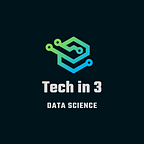Cognitive Computing
According to David Kenny, General Manager, IBM Watson — the most advanced cognitive computing framework, “AI can only be as smart as the people teaching it.” The same is not true for the latest cognitive revolution.
What is Cognitive Computing?
Cognitive computing is the use of computerized models to simulate the human thought process in complex situations where the answers may be ambiguous and uncertain. The phrase is closely associated with IBM’s cognitive computer system, Watson. Cognitive computing overlaps with AI and involves many of the same underlying technologies to power cognitive applications, including expert systems, neural networks, robotics and virtual reality (VR).
How Cognitive Computing works?
Cognitive computing systems can synthesize data from various information sources, while weighing context and conflicting evidence to suggest the best possible answers. To achieve this, cognitive systems include self-learning technologies that use data mining, pattern recognition and natural language processing (NLP) to mimic the way the human brain works.
Using computer systems to solve the types of problems that humans are typically tasked with requires vast amounts of structured and unstructured data, fed to machine learning algorithms. Over time, cognitive systems are able to refine the way they identify patterns and the way they process data to become capable of anticipating new problems and model possible solutions.
Key Attributes of Cognitive Computing:
Adaptive: Cognitive systems must be flexible enough to learn as information changes and as goals evolve. The systems must be able to digest dynamic data in real time and make adjustments as the data and environment change.
Interactive: Human-computer interaction (HCI) is a critical component in cognitive systems. Users must be able to interact with cognitive machines and define their needs as those needs change. The technologies must also be able to interact with other processors, devices and cloud platforms.
Iterative and stateful: Cognitive computing technologies can also identify problems by asking questions or pulling in additional data if a stated problem is vague or incomplete. The systems do this by maintaining information about similar situations that have previously occurred.
Contextual: Understanding context is critical in thought processes, and so cognitive systems must also understand, identify and mine contextual data, such as syntax, time, location, domain, requirements, a specific user’s profile, tasks or goals. They may draw on multiple sources of information, including structured and unstructured data and visual, auditory or sensor data.
How cognitive computing differs from AI?
Cognitive computing is often used interchangeably with AI — the umbrella term for technologies that rely on data to make decisions. But there are nuances between the two terms, which can be found within their purposes and applications.
AI technologies include — but aren’t limited to — machine learning, neural networks, NLP and deep learning. With AI systems, data is fed into the algorithm over a long period of time so that the systems learn variables and can predict outcomes. Applications based on AI include intelligent assistants, such as Amazon’s Alexa or Apple’s Siri, and driverless cars are based on AI.
Where AI relies on algorithms to solve a problem or to identify patterns hidden in data, cognitive computing systems have the loftier goal of creating algorithms that mimic the human brain’s reasoning process to solve an array of problems as the data and the problems change.
When I think about strong innovations in term of Automation, Robotics, Cognitive Computing, and AI they are coming a lot from the Philippines and from India as well. -Pierre Nanterme
